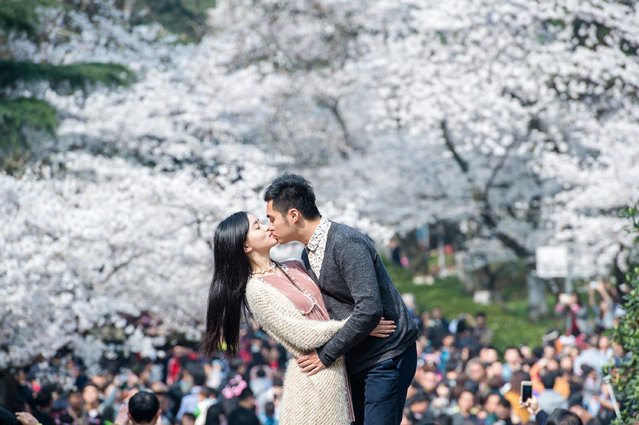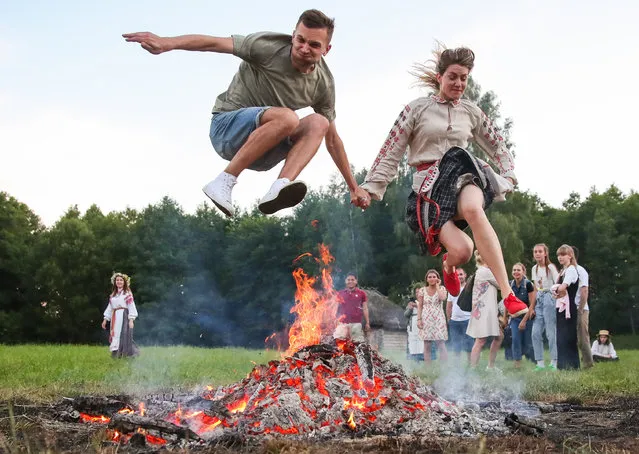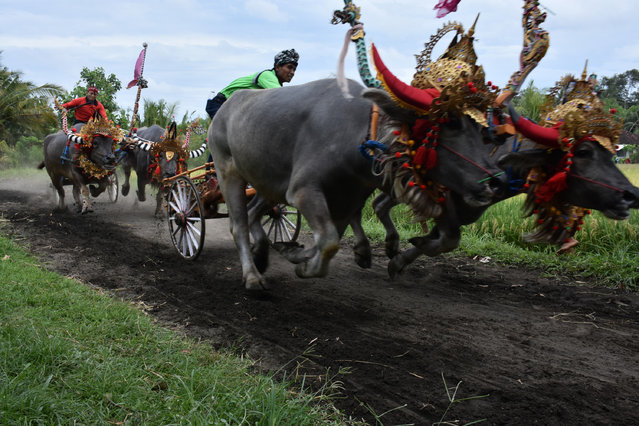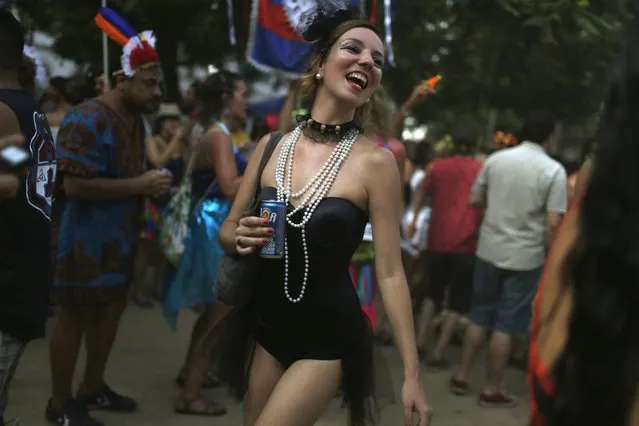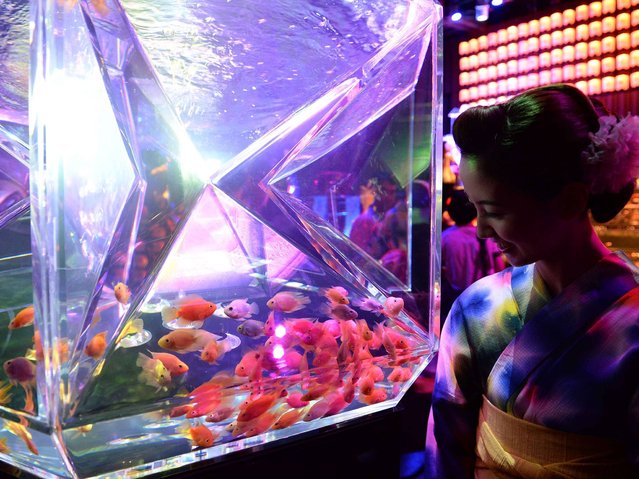
A young woman wearing the summer Kimono, “Yukata” watches the goldfishes during the press preview of “Eco Edo Nihombashi Art Aquarium 2014” exhibition in Tokyo on July 10, 2014. The two-month-long goldfish exhibition will starts July 11. (Photo by Toshifumi Kitamura/AFP Photo)
14 Jul 2014 12:54:00,post received
0 comments

